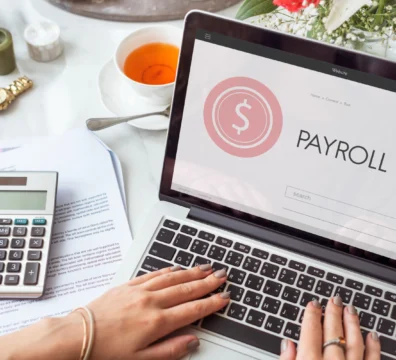Did you know that a recent survey by Forbes shows that women generally earn 17% less than men? Despite contributing the same and having similar qualifications, there was still a wide gap! This opens up the need for a pay equity analysis and bridging this gap to create a cohesive workplace.
In today’s world, fairness in the workplace isn’t just a nice to have; it’s a must. That’s where pay equity analysis comes into play. It’s not just about giving everyone the same paycheck. Instead, it’s about ensuring everyone gets a fair shot based on what they bring to the table.
But, diving into pay equity analysis can feel like a maze. Don’t worry, though. We’re here to guide you through it, breaking down the jargon and making it simple. By the end of this blog, you’ll understand what pay equity is, how to measure it, and why it’s different from equal pay. So, let’s make sense of pay equity analysis together!
Understanding Pay Equity Analysis
Talking about fair pay is one thing, but ensuring it across your organisation is where pay equity analysis comes into play. This might sound like a hefty term, but it’s just about ensuring everyone is rewarded fairly for their contribution to the team, regardless of their background.
Pay equity analysis isn’t about diving into complicated math or legal jargon. At its heart, it’s a way to shine a light on how people are paid and ensure fairness prevails. So, the goal is to ensure that everyone doing work of equal value gets paid equally. It’s not just comparing job titles; it’s about understanding the contribution to the company’s success.
This equity compensation analysis helps us see where gaps might exist. Sometimes, these gaps are not obvious, hidden under traditional practices or overlooked assumptions. Not to mention, conducting a pay equity analysis sends a strong message about your company’s commitment to fairness and equality. It shows you’re not just talking the talk but walking the walk.
How to Conduct a Pay Equity Analysis?
Fair pay is more than just a good idea; it’s the foundation of a great workplace. That’s why understanding and implementing pay equity analysis is so important. This process can seem complex, but we’re here to simplify it.
So, let’s walk through the essential steps and best practices for effective pay equity analysis:
Collect Comprehensive Data
The first step is gathering detailed information about all aspects of compensation within your company. So, this includes not just salaries but bonuses, benefits, and any other perks. Remember, the goal is to get a full picture of what everyone is earning.
Classify and Compare
Once you have your data, it’s time to organise. So, group employees by role, department, or function and then look at the pay within these groups. This helps identify if there are discrepancies that need closer examination.
Analyse for Gaps
Here’s where you dive deep. Look for patterns of inequality. Are certain groups consistently paid less? If so, why? This step is crucial for uncovering hidden biases or practices contributing to unfair pay.
Plan and Act
Finding gaps is one thing; fixing them is another. Develop a plan to address any issues you’ve found. So, this might involve adjusting pay scales, revising compensation policies, or even reevaluating job descriptions and classifications.
Monitor and Update
Compensation equity analysis is not a “set it and forget it” task. Regular reviews are essential to maintain fairness as roles evolve and your team grows. So. make pay equity analysis a regular part of your HR practises.
Your pay equity analysis journey shows your commitment to fairness and equality in the workplace. It’s a clear signal to your employees that you value their contributions and are dedicated to ensuring everyone gets a fair deal. Yes, it requires effort and diligence, but the benefits- happier employees, a stronger company culture, and a more attractive employer brand- are well worth it.
Why Compensation Equity Analysis Matters More Than Ever
Today, the spotlight on fairness and equality in the workplace has never been brighter. Pay equity isn’t just a trend; it’s a crucial part of building a successful, resilient business. Here’s why ensuring fair pay is more important now than it has ever been:
Building Trust
People want to work for companies they believe in, companies that show they care about their employees. When you commit to pay equity, you’re building trust. So, it’s like telling your team, “We’ve got your back,” and that kind of trust is priceless.
Championing Diversity and Inclusion
A fair workplace is a diverse and inclusive one. By ensuring everyone is paid equitably for their efforts, you’re taking a stand for diversity and inclusion. So, pay equity analytics sends a clear message that everyone’s contribution is valued equally, regardless of background.
Boosting Employee Morale
Knowing you’re being paid fairly for your work does wonders for your morale. It’s comforting to see that your employer takes fairness seriously. So, this kind of morale boost can lead to increased employee productivity, creativity, and loyalty.
Attracting Top Talent
The best talent out there is looking for more than just a paycheck. They want to work somewhere that aligns with their values. Therefore, a commitment to pay equity can make your company stand out as a desirable workplace, helping you attract and retain the best.
Protecting Your Reputation
In the age of social media and immediate communication, news spreads quickly. A reputation for fairness in pay can enhance your company’s image, while any perception of inequality can do significant damage. So, in other words, fair pay practices are not just good ethics; they’re good for your brand.
Future-Proofing Your Business
The world is changing, and businesses need to adapt to stay ahead. So, embracing pay equity is a step towards future-proofing your company. It ensures that your business remains relevant, respected, and competitive in a world that increasingly values equality and fairness.
Therefore, ensuring fair pay is more than just the right thing to do; it’s a smart business strategy. It’s about creating a workplace where everyone feels valued, respected, and motivated to give their best.
How 6 Pence Helps
Navigating pay equity analysis can be complex, but it doesn’t have to be a journey you take alone. If you feel that you need help with staffing, HR administration, and payroll processing, then reach out to 6 Pence.
Our experts have years of experience in managing the staffing and payroll needs of top MNCs and government bodies in Oman, Iraq, Bahrain, and Dubai! Our end-to-end, customised strategies will ensure you have access to the best talents and pay them as per industry standards.
For more details, connect with us today!
Frequently Asked Questions
What is the meaning of pay equity?
Pay equity means ensuring everyone gets paid fairly for their work, no matter who they are. So, it’s all about fairness in pay for similar work or work of equal value.
What is used to measure pay equity?
To measure pay equity, companies look at things like job roles, experience, and performance. They compare this information to make sure everyone is getting a fair deal.
What is the difference between equal pay and pay equity?
Equal pay is about making sure men and women get the same pay for doing the same job. Pay equity goes further, aiming to ensure all jobs that are of equal value to the company are paid equally, no matter what the job is or who’s doing it.
Also Read: The Art of Asking Effective Pre-Screening Interview Questions




































































































